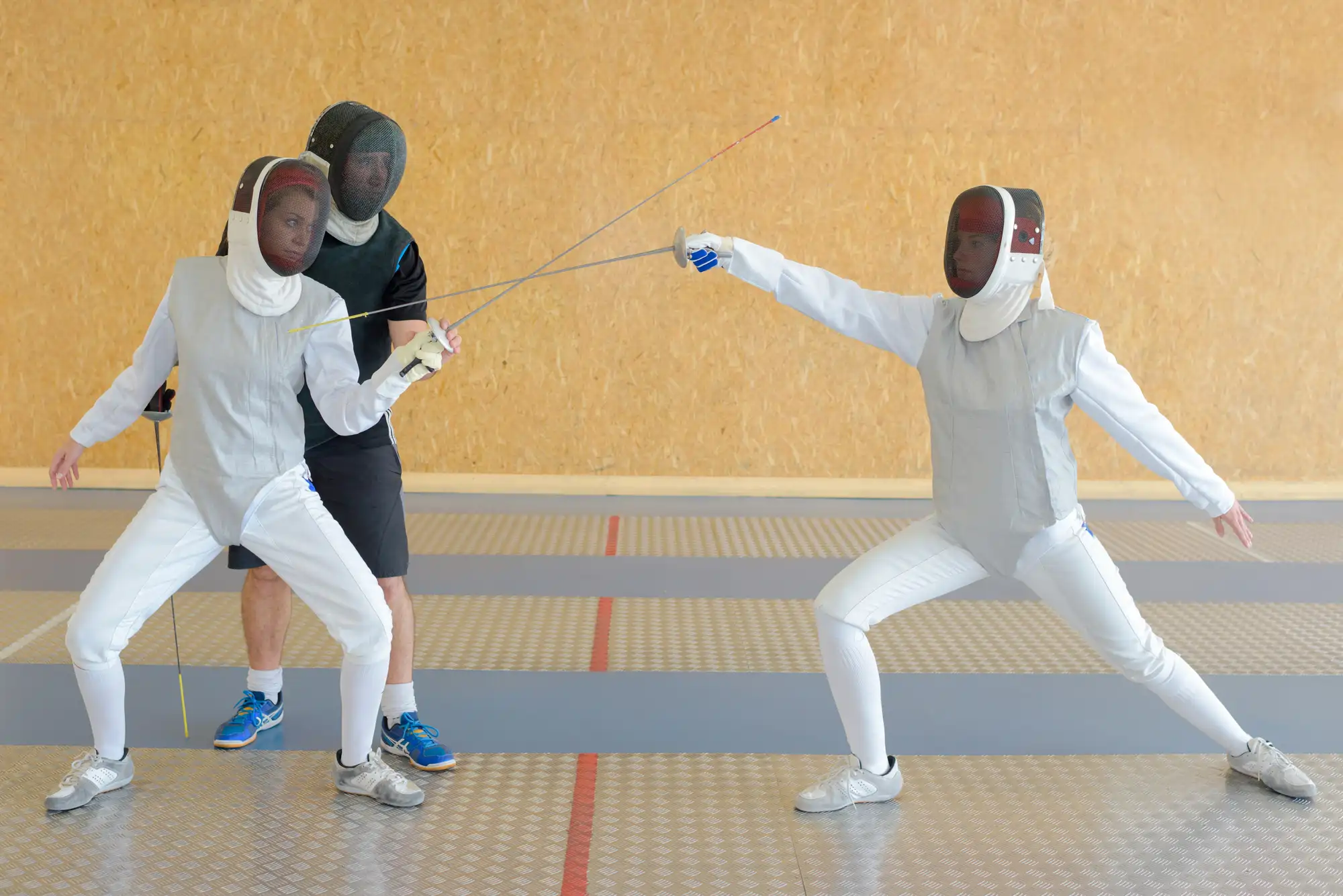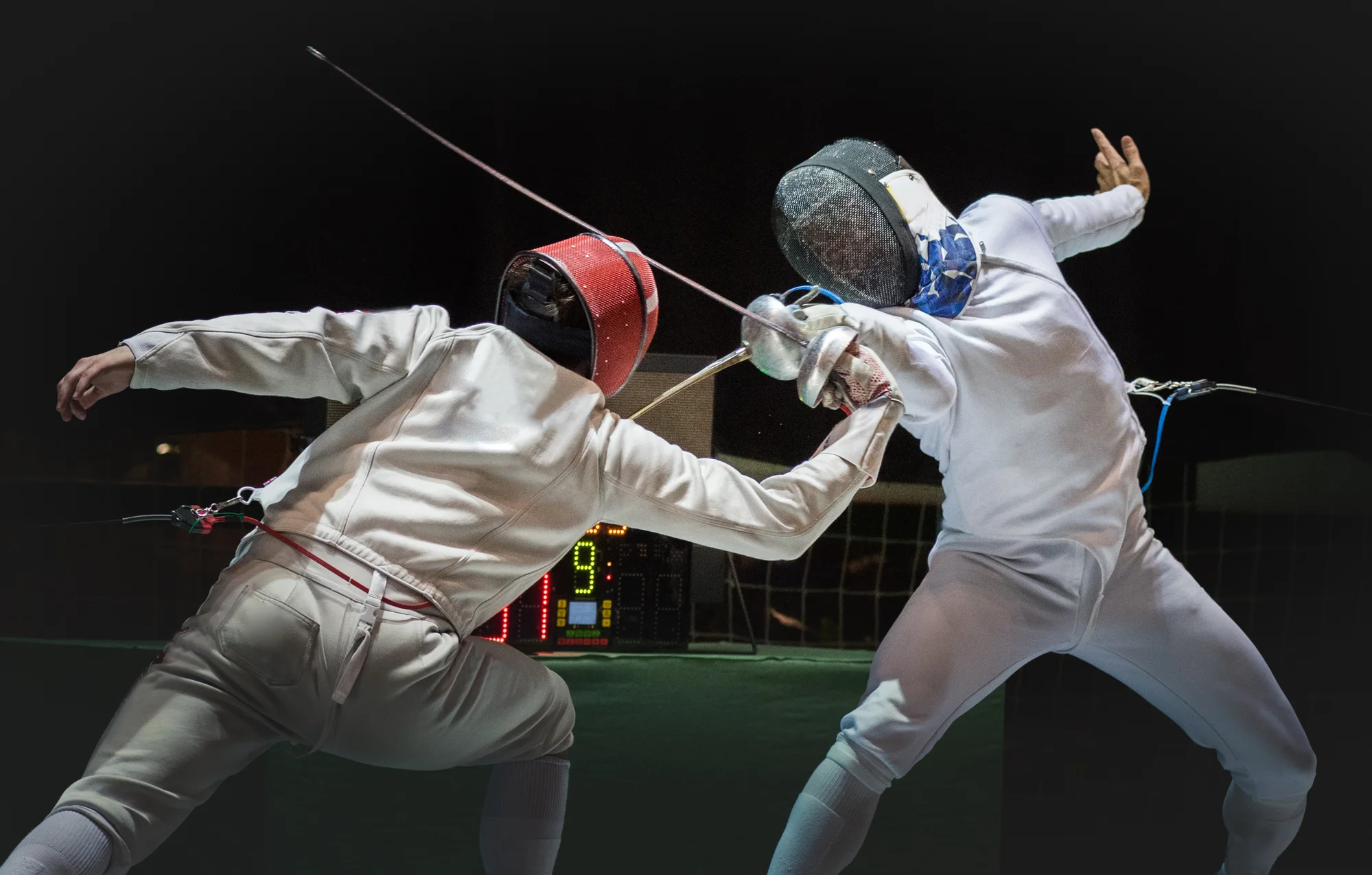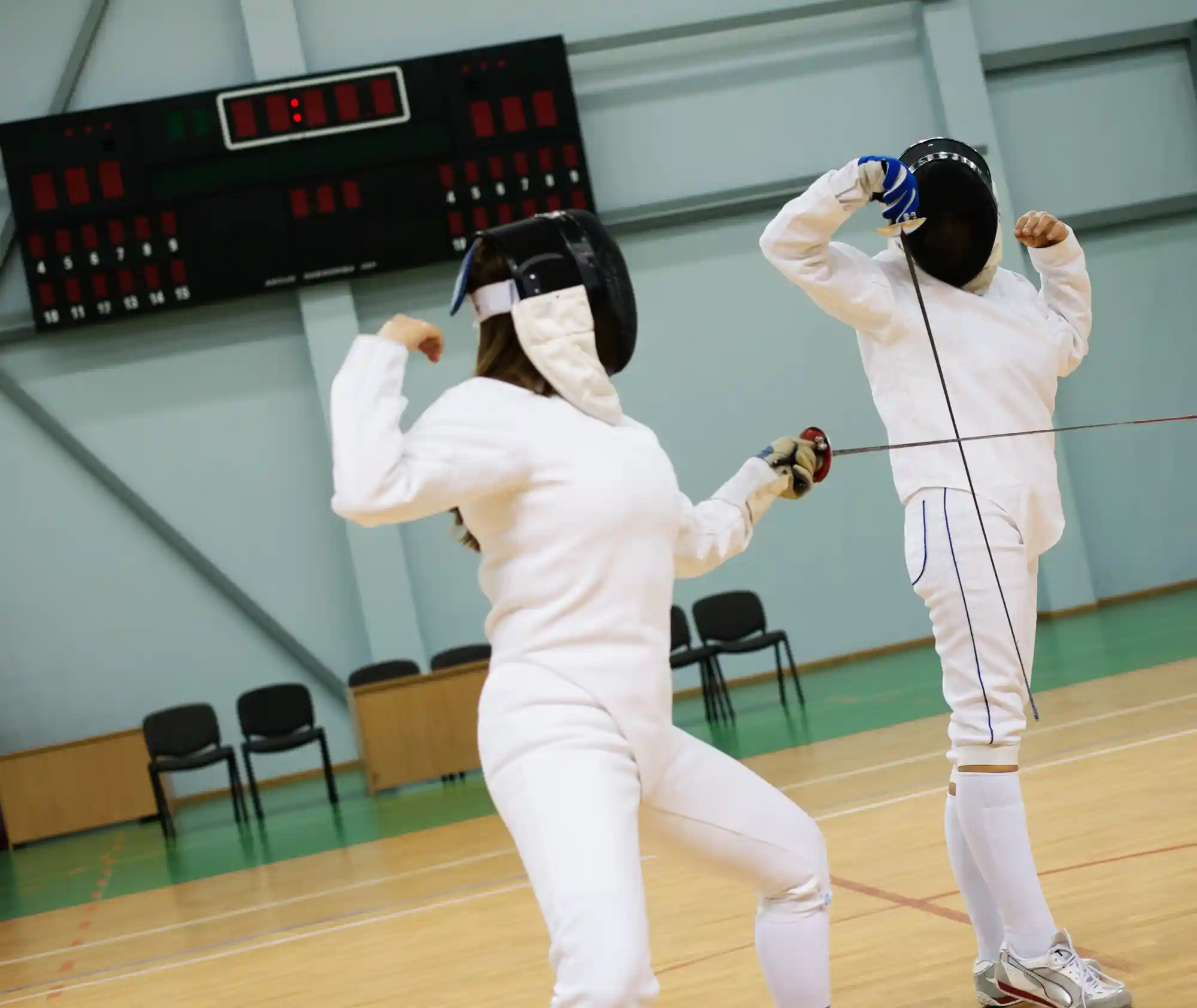We may earn revenue from the products available on this page and participate in affiliate programs. Learn more >
What is foil fencing? Foil fencing, one of the three disciplines in modern competitive fencing, is a dynamic and strategic combat sport that demands precision, agility, and mental fortitude. Beyond its elegant appearance and captivating choreography, foil fencing is a complex game steeped in history and governed by specific rules and conventions.
This article will delve into the core principles of foil fencing, exploring its unique weapon characteristics, target area, right-of-way rules, and the strategies that make it such a compelling and challenging sport for both participants and spectators.
Read: The Best Fencing Shoes in 2025 (Epee, Foil, and Sabre)
History
Foil fencing began as a training method rather than a sport. In 17th-century France, the foil was developed as a practice weapon for the smallsword, which was commonly used in duels. Unlike real blades, foils were lighter and had blunted tips, allowing swordsmen to train more safely and refine their technique without serious injury.
By the 18th century, fencing schools across Europe had adopted the foil for instruction. This era also saw the codification of rules designed to foster safety, accuracy, and control.
The development of the wire mesh fencing mask in the late 18th century revolutionized the sport. By providing crucial facial and head protection, the mask enabled fencers to adopt quicker and more assertive techniques, particularly the parry-riposte, a fundamental tactic in foil strategy.
Foil fencing gained formal competitive recognition in the 19th century, appearing in military academies and public demonstrations. Its prominence led to its inclusion as one of the original events at the inaugural modern Olympic Games in 1896, although initially only for men. Women’s foil made its Olympic debut in 1924.
A significant advancement arrived in the mid-20th century with the advent of electric scoring. Beginning in 1955, competitions adopted electronic systems to accurately record valid touches, minimizing disagreements and accelerating the judging process.
Sword Used in Foil Fencing

The foil itself is a light and flexible weapon intended solely for thrusting attacks. A foil sword has a maximum length of 110 cm, with the blade measuring less than 90 cm and the hilt no more than 20 cm. The weight should not exceed 500 grams. The blade has a rectangular cross-section and features a blunt tip equipped with a spring mechanism.
This tip requires approximately 5 Newtons of force to be fully depressed, which is the necessary action to register an electronic touch on the valid target. A small, circular hand guard, often called the bell guard, is located near the handle and serves to protect the fencer’s hand from accidental hits. Fencers can choose from various types of grips, such as the traditional French grip or the more ergonomic pistol grip, each offering different levels of control and feel.
The foil also incorporates electrical components, including wires running through the blade and a connector in the handle. These are essential for the electronic scoring system to function, registering when the tip makes contact with the opponent. The inherent flexibility of the foil blade not only contributes to the safety of the sport but also enables advanced techniques like the “flick.” This technique involves the fencer using the bend of the blade to make contact with the opponent’s back or flank, often from seemingly improbable angles.
A foil sword has a maximum length of 110 cm, with the blade measuring less than 90 cm and the hilt no more than 20 cm. The weight should not exceed 500 grams, typically ranging between 350-450 grams for most standard foils.
In professional fencing matches, foil swords are equipped with a blunt tip that features a button. When this button is pressed, it registers a point. To count as a valid touch, the tip must hit the permitted target area with a certain amount of force.
These are electric swords, with an electric system that registers the points placed along the blade. There are also non-electric ones, which are similar but used for practice.
How Foil Fencing Works and Its Rules
In foil fencing, the goal is to score points by landing a valid touch – a hit made with the foil’s tip on the opponent’s designated target area. These matches are fought on a specialized playing area called the “piste,” or fencing strip.
Target Area– In foil, only the torso is a valid target. This includes the fencer’s chest, abdomen, back, and shoulders. The head, arms, and legs are off-target. To ensure accurate scoring, fencers wear a metallic vest called a lame, which electronically registers touches within the designated torso target area.
Right of Way (Priority)– The right of way rule dictates who scores when both fencers land touches at the same time. The fencer who initiates a valid attack first is awarded priority. However, if the defender successfully parries the attack, they gain the right of way and can score by riposting. The referee determines right of way during these simultaneous scoring situations.
Scoring and Off-Target Hits– Touches that land outside the valid target area stop the bout temporarily but do not award points. These are typically indicated by a white light on the scoring system.
Bout Structure– Direct elimination matches are composed of three three-minute periods, separated by one-minute breaks. To win the bout, a fencer must either be the first to score 15 points, or have the highest score when the final period ends.
Foil fencing also has rules regarding penalties and rule violations. These penalties address a range of infractions, from unsportsmanlike conduct and dangerous actions to illegal bodily contact (corps-à-corps), intentional delaying of the bout, and stepping off the fencing strip. The severity and frequency of an offense typically dictate the penalty, which is often indicated by a progression of colored cards.
A yellow card is a simple warning. A red card, however, warns the fencer and awards a point to their opponent. For serious or repeated rule violations, a black card results in immediate disqualification, potentially from the current bout or the entire competition. Examples of penalized actions include using the non-weapon hand for an advantage, deliberately dropping the weapon, or turning one’s back to the opponent on the fencing strip.
Equipment used in Foil
Fencing equipment is generally uniform across the different disciplines. All fencers utilize the same basic protective gear, such as masks, shoes, socks, and pants. However, foil fencers have an additional piece of equipment we mentoioned before, the lame, a conductive garment that covers only the torso.
Last words
So, foil fencing, as this guide has shown, operates under rules of right-of-way – a key element it shares with sabre, distinguishing them both from the all-points-count rules of epee. What truly defines foil is the combination of these priority rules with its restricted torso target and point-only scoring.
This blend shapes foil’s unique demand for precision, strategic bladework, and agility. It’s no surprise, then, that a crucial fencing tip often emphasizes the patience and control needed to master this intricate style within the fencing family. Understanding this core challenge is key to appreciating foil.







